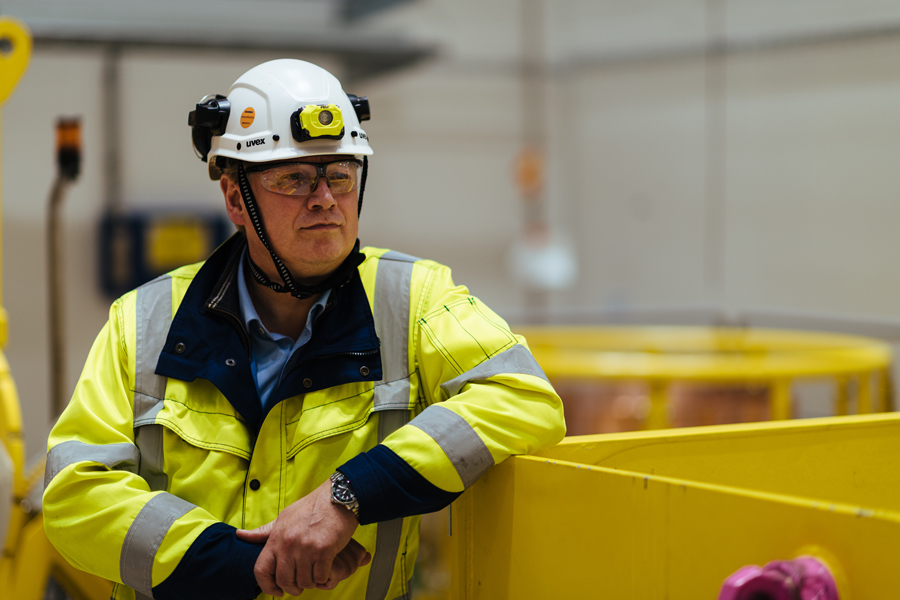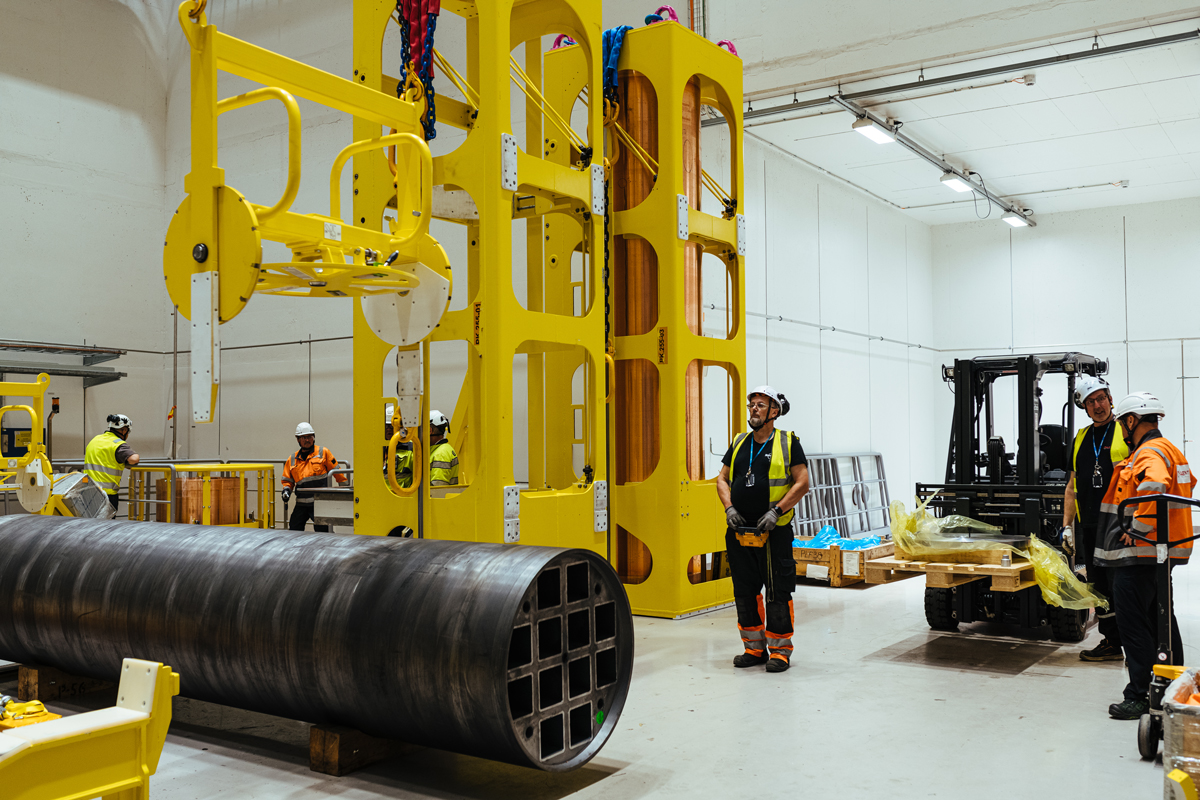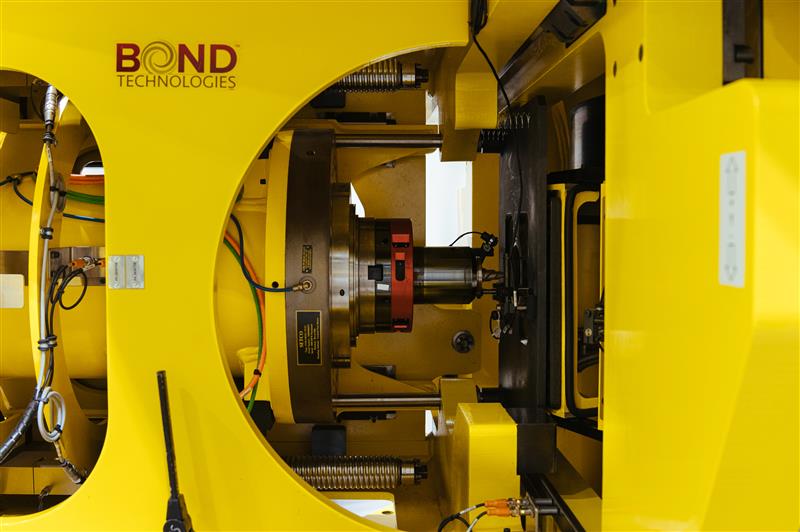Trial Run ensures safety of final disposal
At the end of August 2024, Posiva Oy commenced the Trial Run of Final Disposal. The purpose of the Trial Run is to test the joint functionality of all the equipment, systems, processes, and the organisation. All the tests during the Trial Run are carried out without spent nuclear fuel.

Finland is the first country in the world where a solution reaching implementation stage has been developed for the final disposal of spent fuel. The final disposal facility based on decades of continuous research and development efforts is now ready for the joint functionality test, the Trial Run of Final Disposal.
– The Trial Run started in late August and will continue for several months. The test is designed to verify the safe final disposal of spent nuclear fuel when it starts in mid-2020s, explains Posiva’s Production Director Karri Osara.
Osara admits that the role of Production Director during the Trial Run of the world’s first final disposal facility for spent nuclear fuel is extremely fascinating.
– The Trial Run is not just about testing technical solutions. It offers the dozens of nuclear professionals involved an opportunity to demonstrate their competence and acquire further knowledge, and gives Posiva the chance to make final adjustments in systems and expand the detailed procedures related to final disposal. It is also an important step for the nuclear industry as a whole and attracts worldwide interest, Osara says.
In the nuclear sector, open sharing of good practices among energy companies is common. This does not apply as such to the final disposal facility, because there is no other similar facility in the world with which to share thoughts.
– Fortunately we have at our disposal the extensive expertise of the TVO Group in the nuclear sector which is a strength in pioneering work – not forgetting the support available to us from our other owner Fortum.
Posiva’s Trial Run serves the testing of processes and systems developed specifically for final disposal, but the Radiation and Nuclear Safety Authority of Finland (STUK) also follows the Trial Run closely and is provided with real-time information about the progress of the tests.
All work phases from interim storage to bedrock
The Trial Run of Final Disposal is divided into two stages. The first stage is reserved for testing the operation of the encapsulation plant, while the second stage focuses on the final disposal repository located underground at a depth of about 430 metres.
The tests carried out during the Trial Run cover the operation of the whole final disposal process. The testing started with the assembly of the canister components and the transfer of the test transport cask from the spent fuel storage to the encapsulation plant. The Trial Run will be concluded once four test canisters have been placed in the repository for final disposal following the same principles that will be applied with canisters containing spent nuclear fuel.
– The key word for the first stage is encapsulation. The empty final disposal canister and the spent nuclear fuel come together at the encapsulation plant. The final disposal canister is assembled from components at one end of the building, the spent nuclear fuel enters the process at the other end. The fuel assemblies, which have been stored in water pools, are dried in the fuel handling cell under vacuum and then transferred into the canister, Osara explains.
The canister is filled with argon gas to prevent oxidisation and closed tightly with its inner steel lid. The canister is finally closed with a copper cover which is friction stir welded to ensure a seamless structure with the copper canister. The tightness of the welded joint is verified with eddy current and ultrasonic inspections.
– The tests are carried out using test assemblies that are replicas of the real fuel. When all the test canisters have been encapsulated, they are first transferred to the storage facility at the encapsulation plant for further transfer in a lift into the storage facility of the final disposal repository. The handling of the test canisters has provided us with more specific information for the development of the processes.

Special attention paid to safety
At the second stage of the Trial Run, testing focuses on technology and practices in ONKALO® at a depth of about 430 metres, as the final disposal canisters are transferred from the storage to the deposition holes and surrounded with bentonite backfill. Some unique technology has been developed for the transfer and the bentonite backfill process. For example, the canister transfer and installation vehicle is 12.5 m long and weighs 87 tons.
– The Trial Run utilises equipment and technology designed for the requirements of final disposal. The tests carried out deep in the bedrock will demonstrate the performance of the equipment, Osara says.
– Before the canister is placed in the final disposal hole, bentonite blocks are installed with the buffer block installation system. The final disposal canister does not come into direct contact with the bedrock at any point, but is surrounded with bentonite installed beneath, on top and on all sides of the canister. When the bentonite swells, it forms a tight buffer between the canister and the bedrock.
Once all four test canisters have been placed in the final disposal holes, the corridor is filled with granular bentonite and sealed with a reinforced concrete plug – in exactly the same way as in the actual final disposal process.
– The safety of final disposal relies on the multi-barrier principle which ensures its long-term safety. This solution is based on long-term, comprehensive research work as well as various modelling analyses used to demonstrate the safety of the concept.
The joint functionality test will also cover a situation where the final disposal canister is found to be defective.
– The production chain is designed to ensure that damage to the canister is highly unlikely. However, we must still be able to retrieve the canister from ONKALO back to the encapsulation plant and transfer the nuclear fuel to a new canister, should this be necessary. Osara stresses that safety is the number one priority in the operation of TVO and Posiva.
– We have designed the Trial Run of Final Disposal to verify that all the different areas of safety are realised. In final disposal, long-term safety is a separate dimension where a period of hundreds of thousands of years needs to be considered.
When in operation, the final disposal facility will be used for the final disposal of spent nuclear fuel from both Loviisa and Olkiluoto power plant units. With the current scope of design, ONKALO can accommodate a total of 6,500 uranium tons of spent fuel, or about 3,250 final disposal canisters.

Read more: Test operation – Countdown to starting final disposal
Text: Timo Sillanpää
Photos: Tapani Karjanlahti
Share